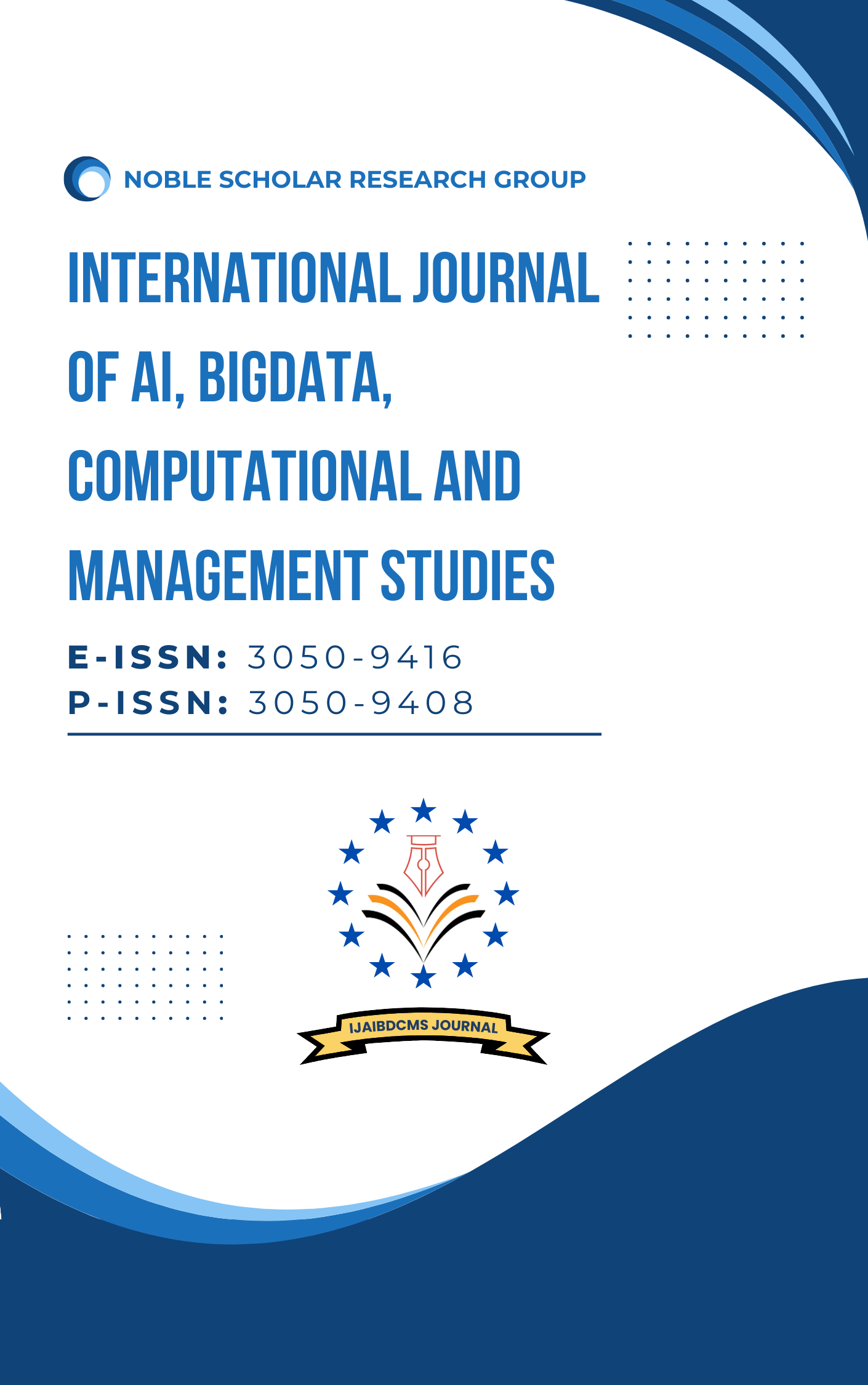Designing Developer-Centric Internal APIs for Rapid Full-Stack Development
DOI:
https://doi.org/10.63282/3050-9416.IJAIBDCMS-V2I4P108Keywords:
Internal APIs, Full-Stack Development, Developer-Centric Design, API Usability, Software Engineering PracticesAbstract
The increased speed at which modern full-stack development is driven has increased the strategic value of internal APIs as a key enabler of fast, reliable, and scale-out software delivery. The more established API design approaches tend to focus on functionality and performance, thus omitting human considerations that are critical to developer uptake, collaborative usage, and future maintainability. Such management causes integration logjams, uncoordinated development patterns and low productivity within distributed groups. In response to these issues, this paper contains a systematic account of a method to develop internal APIs, where the underlying technical robustness is held in check by developer-friendly design principles. Important things to consider are expressive interface design, semantic versioning, consistent documentation, and modular architectures that would promote reuse but would reduce the complexity of integration efforts. In order to prove the efficiency of our proposed framework, we will do a case study in a typical enterprise development environment; these are the developer productivity, systems integration efficiency, and the scale-up performance. Results exhibit marked advances in the rate of development, reduction of defects, which are related to integration, and the frontier of developer satisfaction compared with traditional methods of API design. The findings highlight the geography of the placement of developers as leading stakeholders concerning internal API design, and it also offers practical advice to organizations to employ digital trans formats over accelerating trans formats via effective design of APIs that are human-friendly. The approach offered does not just build stronger software delivery pipelines but also creates a repeatable model that provides the ability to respond to the long-term requirements of sustainable full-stack agility within organizations
References
1. Verborgh, R., & Dumontier, M. (2018). A Web API ecosystem through feature-based reuse. IEEE Internet Computing, 22(3), 29-37.
2. Kuhn, A., & DeLine, R. (2012, June). On designing better tools for learning APIs. In 2012, 4th International Workshop on Search-Driven Development: Users, Infrastructure, Tools, and Evaluation (SUITE) (pp. 27-30). IEEE.
3. Bermbach, D., & Wittern, E. (2016, May). Benchmarking web api quality. In International Conference on Web Engineering (pp. 188-206). Cham: Springer International Publishing.
4. Shahin, M., Babar, M. A., & Zhu, L. (2017). Continuous integration, delivery and deployment: a systematic review on approaches, tools, challenges and practices. IEEE Access, 5, 3909-3943.
5. Abbass, M. K. A., Osman, R. I. E., Mohammed, A. M. H., & Alshaikh, M. W. A. (2019, September). Adopting continuous integration and continuous delivery for small teams. In the 2019 International Conference on Computer, Control, Electrical, and Electronics Engineering (ICCCEEE) (pp. 1-4). IEEE.
6. Murphy, L., Kery, M. B., Alliyu, O., Macvean, A., & Myers, B. A. (2018, October). API designers in the field: Design practices and challenges for creating usable APIs. In 2018 IEEE Symposium on Visual Languages and Human-Centric Computing (VL/hcc) (pp. 249-258). IEEE.
7. Yang, R., & Xu, J. (2016, March). Computing at massive scale: Scalability and dependability challenges. In 2016, IEEE Symposium on Service-Oriented System Engineering (SOSE) (pp. 386-397). IEEE.
8. Mathijssen, M., Overeem, M., & Jansen, S. (2020). Identification of practices and capabilities in API management: a systematic literature review. arXiv preprint arXiv:2006.10481.
9. Dekel, U., & Herbsleb, J. D. (2009, May). Improving API documentation usability with knowledge pushing. In 2009, IEEE 31st International Conference on Software Engineering (pp. 320-330). IEEE.
10. Grønbæk, I. (2008, August). Architecture for the Internet of Things (IoT): API and interconnect. In 2008, Second International Conference on Sensor Technologies and Applications (sensorcomm 2008) (pp. 802-807). IEEE.
11. Albin, S. T. (2003). The art of software architecture: design methods and techniques (Vol. 9). John Wiley & Sons.
12. Wang, C., & Xu, L. (2008). Parameter mapping and data transformation for engineering application integration. Information Systems Frontiers, 10(5), 589-600.
13. Caplice, C., & Sheffi, Y. (1994). A review and evaluation of logistics metrics. The international journal of logistics management, 5(2), 11-28.
14. Paas, F., & Firssova, O. (2004). Usability evaluation of integrated e-learning. In Integrated E-learning (pp. 112-125). Routledge.
15. Chandra, A. N. R., El Jamiy, F., & Reza, H. (2019, December). A review of usability and performance evaluation in virtual reality systems. In the 2019 International Conference on Computational Science and Computational Intelligence (CSCI) (pp. 1107-1114). IEEE.
16. Gould, J. D., Boies, S. J., & Lewis, C. (1991). Making usable, useful, productivity-enhancing computer applications. Communications of the ACM, 34(1), 74-85.
17. Hartson, H. R., & Castillo, J. C. (1998, May). Remote evaluation for post-deployment usability improvement. In Proceedings of the working conference on Advanced visual interfaces (pp. 22-29).
18. User-Centric Web API Design, medium, online. https://medium.com/tribalscale/user-centric-web-api-design-c977298b3e4a
19. Zhong, H., & Mei, H. (2017). An empirical study on API usage. IEEE Transactions on Software Engineering, 45(4), 319-334.
20. Biehl, M. (2015). API architecture (Vol. 2). API-University Press.
21. Subramanian, H., & Raj, P. (2019). Hands-On RESTful API Design Patterns and Best Practices: Design, develop, and deploy highly adaptable, scalable, and secure RESTful web APIs. Packt Publishing Ltd.
22. Rahul, N. (2020). Vehicle and Property Loss Assessment with AI: Automating Damage Estimations in Claims. International Journal of Emerging Research in Engineering and Technology, 1(4), 38-46. https://doi.org/10.63282/3050-922X.IJERET-V1I4P105
23. Enjam, G. R. (2020). Ransomware Resilience and Recovery Planning for Insurance Infrastructure. International Journal of AI, BigData, Computational and Management Studies, 1(4), 29-37. https://doi.org/10.63282/3050-9416.IJAIBDCMS-V1I4P104



